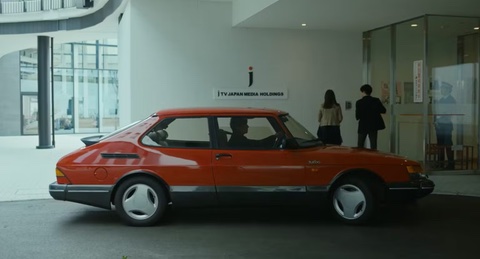
If you noticed a blue tinge to the Oscar-winning drama Drive My Car, it was very intentional.
Color was especially important in a film so rich with symbolism. And blue matches the somber but icy clear perspective of the film, in which an actor and director (Hidetoshi Nishijima) travels from Tokyo to Hiroshima to put on a production of Uncle Vanya after an unexpected tragedy. He enlists a young driver (Tōko Miura), and a unique relationship begins.
The film by director Ryûsuke Hamaguchi, which won Best International Feature Film at this year’s Oscars, took an international approach to color grading. Colorist Yumeto Kitayama of IMAGICA Entertainment Media Services, Inc. used DaVinci Resolve Studio to achieve a look more common in European films than Japanese cinema.
“The filmmakers requested a bluish tone that had the feel of European films rather than conventional Japanese films,” he said in a conversation with Blackmagic, which releases DaVinci Resolve. “We tried not to go too extreme with the visuals, but instead create a natural look with a subtle hint of that blue tone.”

There is at least one prominent exception to the prevailing blue color scheme in Drive My Car
Color grading the film involved creating different LUTs, or look-up tables, in DaVinci Resolve. (An LUT is a tool that lets filmmakers save specific color grades as templates.)
Kitayama and cinematographer Hidetoshi Shinomiya referred back to the LUTs on set to make sure the film’s color palette was correct. Different color schemes in the film convey the different temperature and atmosphere of the three main locations where the story takes place.
Won’t You Take 10 Seconds to Sign Up for Our Newsletter?
“For example, Tokyo and Hokkaido have a cold feeling, with more blue and cyan tones. Hiroshima, on the other hand, has a slightly warmer tone,” Kitayama said. “It is very important to convey the ‘smell’ and ‘temperature’ of the footage. I believe that a good DP and director can produce good images, but conveying a sense of smell and temperature is a major part of process that grading can contribute. The footage the director Hamaguchi and Shinomiya shot was fantastic, and I tried to convey those sensory aspects in the grading so that I could make a good picture look even better.”
The pre-planning paid off.
“Since the film was more than three hours long, it was expected to take some time for grading,” Kitama explained. “However, the LUTs created in advance matched the mood of the work quite well, so there was little need to make major color changes from there. When I saw the rushes, I thought they basically had a nice tone. It was not that I had to fix something, but rather, I could make it a touch or two better with grading.”
There is a striking exception to all the blue tones: the red car in the film’s title.
“I wanted the Saab’s red color to contrast with that blue,” said Kitayama.
Drive My Car is now in theaters, and available on VOD and HBO Max.

